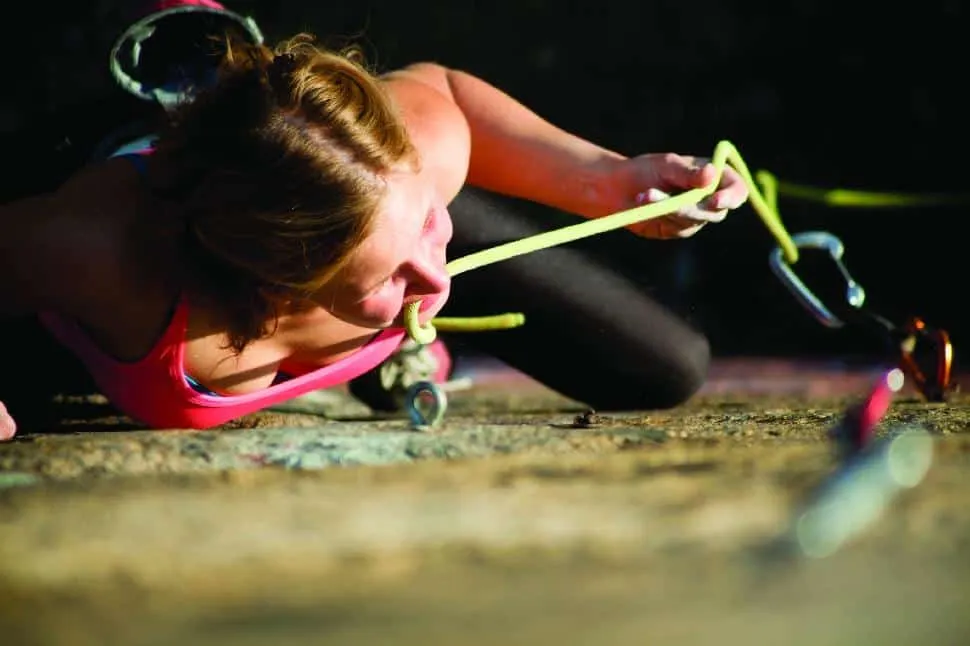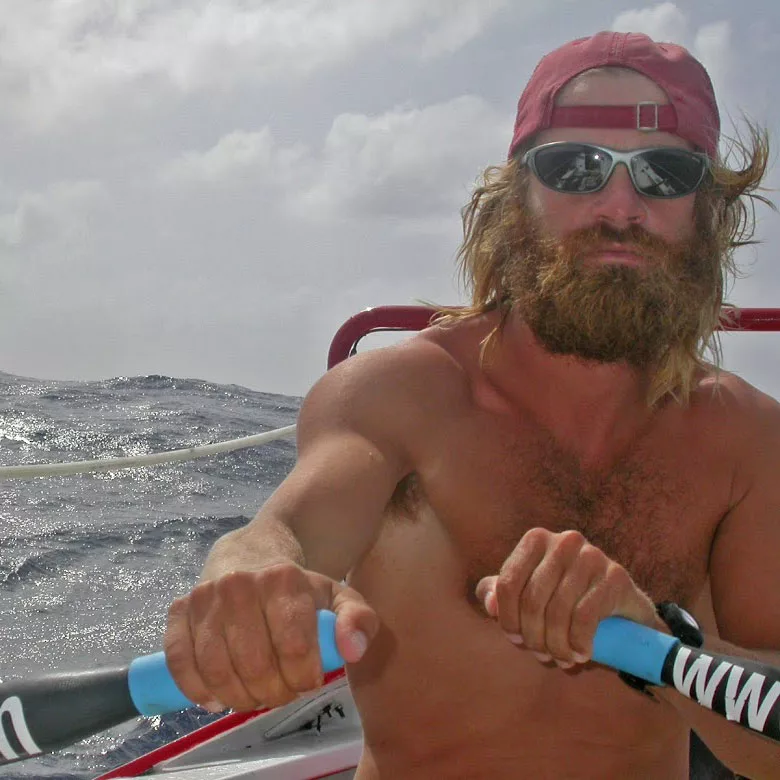Get Gritty: A Guide to Success Outdoors

Outdoor enthusiasts are in prime position to build “grit”—considered the single-most important personality trait in successful people.
When husband and wife Bob and Linda Tininenko were invited to sail from Washington State to Costa Rica in a friend’s trimaran, they expected a romantic adventure. The owner of the boat, James Fisher, a Seventh Day Adventist Missionary planning to do missionary work in Central America, needed crew to help sail his boat to sunny latitudes. But just days after leaving, a storm capsized the vessel and the three occupants were forced to wait for help inside the overturned hull.
The story that follows is a remarkable tale of survival, as chronicled in the book Lost! For more than two months, the trio survived in the freezing, inky blackness and mostly water-filled inverted interior of their boat. One might think it couldn’t get any worse, but it does. Fisher insisted that God had capsized the boat because of Bob’s lack of spiritual commitment and proceeded to sabotage their ability to survive or get rescued, destroying their flares and radio and jettisoning food and water. He believed their self-preservation efforts were interfering with God’s will and they would only be saved when Bob fully embraced the Lord.
By the time they were rescued by a passing ship, 72 days after the accident, Linda and her unborn child had already died. Fisher would die a short time later, leaving Bob as the sole survivor of this maritime tragedy.
Remarkable stories of survival like Bob Tininenko’s embody the term “grit;” the sheer will to survive in the most horrific conditions. Grit is defined as a character trait that allows one to persevere with long-term goals, regardless of setbacks and with minimal rewards. While grit is often associated with the tenacity to survive, it’s also a characteristic that allows us to thrive in the regular world. Grit is the single-most important character trait for career and academic success, according to University of Pennsylvania researchers.
These findings counter the commonly held notion that success is determined by our intellect, physical prowess or social skills. Instead, it seems that it is our ability to persevere, despite setbacks or lack of natural talent, that matters most. Overall, this is great news, especially for the majority of us who aren’t particularly gifted in any given realm. While it may seem impossible to significantly increase our IQ or physical capabilities, becoming more resilient does seem plausible. But how? Undoubtedly, part of the equation is a result of our hardwiring—but also our life experiences.
To build grit, we need to put ourselves in situations that require grit. That means forcing ourselves to endure pain, monotony, hardship and failure—along with the occasional hard-won success. As such, outdoor enthusiasts are in an excellent position to increase their mental fortitude. Whether it’s struggling to complete your first marathon, persevering through a Tough Mudder obstacle race, or turning back from a mountain peak due to bad weather, outdoor activities offer excellent ways to build both physical and emotional stamina.
Loving the outdoors is a good starting point, but if you’re looking for self-improvement, you have to come up with a challenge that’s going to stretch personal boundaries—while keeping the risk margins in check. And remember, not all outdoor pursuits are created equal. A day lounging at the beach does not build the same mental fortitude as a year-long effort to excel in an Ironman challenge. Whatever challenge you decide to take on, the quest itself is usually just a small part of the overall package—the most important elements, such as research, training and planning, precede it.
The more challenging and difficult the endeavor, the greater the gratification when you finally meet your goals, however, the risk of failure also rises. In order to give yourself the best chance at succeeding, use three key strategies.
Set specific goals and share them with friends; the mere act of publicizing our goals helps us stay accountable. Decide on measurable milestones that will help you achieve your challenge, and monitor them along the way. Without concrete confirmation of your progress, it’s too easy to think you’re doing more or better than you really are. And finally, if you think you can’t or don’t want to do it on your own, recruit a partner. You will motivate each other through the toughest times. However, even with the best planned and executed challenges, things can go wrong. Keep in mind failure is an even greater grit-builder than success, and is often inevitable when pushing personal boundaries.
With my own outdoor adventures, one stands out as a true grit-builder. In 2011, I planned to circle Vancouver Island’s 1,100-km perimeter in a rowboat in an attempt to break the human-powered speed record. Compared to our previous epic journey circling the world by human power, this seemed relatively easy, but there was one key difference. Unlike all my other adventures where speed was not a factor, I would need to average a gruelling 70 km per day—much of it in rough, open sea conditions. I spent months researching, training and preparing for the event. As my mid-June departure date drew close, I became more anxious and worried.
The voyage was even more challenging than I imagined. Hours on the oars seemed to last an eternity, and at the end of each day I dragged myself ashore, nursing blisters and wolfing down dried rations. Worsening tendonitis made life on the water so painful that I almost quit after having paddled more than two-thirds of the distance. I pulled ashore with grotesquely swollen forearms and sulked most of the day in my tent. Finally, I decided to get back in the boat and carry on. The final four days of that voyage are indelibly etched in my brain. I remember nothing other than pain; each oar-stroke a knife plunging into my arms.
But, when I finally pulled up to the beach where I had begun, 15.5 days after starting, the feeling was pure euphoria. And while it’s hard to quantify how much stronger that experience made me emotionally, I have no doubt it made a difference. I don’t think I’m naturally a gritty person. In school, I was a daydreamer—only half-committed to my scholastics. Discomfort such as biting bugs or dust in my eyes drives me crazy; however, my years of continued outdoor challenges have certainly helped me become a more resilient person, capable of taking on long-term goals.
Last year, I planned to enter R2AK—a 1,200-km human-and-sail-powered boat race from Port Townsend, Washington to Ketchikan, Alaska. After a year of preparations, including designing and building a boat, my boat fell off its trailer two days before the race, shattering my dreams of competing. Hearing the boat splinter onto the asphalt was heartbreaking, but despite all the emotions, I forced myself to look at the big picture and I knew it wasn’t such a big deal. I rebuilt the boat, improved some of the systems, and now I’m entered in R2AK 2016. And if the boat falls off the trailer again, or sinks at the start, I’ll try to take solace in the fact that it all builds true grit.














